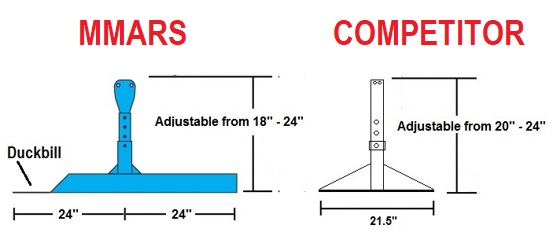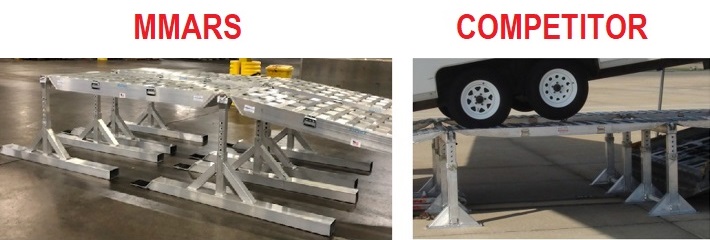Stand Sturdiness
On shorter stands, both the MMARS system and our competitor’s system use a “duckbill” on each stand foot. When possible, putting the duckbills under the aircraft toes helps stabilize the system and prevents movement. Unlike our competition, Landsport puts duckbills on ALL stands. This increases the chances that the aircraft can stabilize the system regardless of what configuration is created. What happens, however, when no part of the aircraft can sit on top of the shoring system because of the configuration being setup?
The premise is a simple one. The wider the stand base, the less likely it will tip over. It is harder to push someone over when their feet are spread apart (wider base) than if you try and push the person over when their feet are closer together (narrower base). This fact is why the MMARS stands are far superior to our competitor’s stands.
A MMARS stand base is twice as long as its highest adjustment height. If the stand adjusts up to 24”, then the stand base is 48” long. This is not the case with our competitor’s system. Here we see the difference.

The higher the stand gets, the easier it is to tip it over. Hitting a brake hard or accelerating too fast could cause an extreme force on the shoring system. This is not good news for our competitor’s system because higher stands are only used when the aircraft does NOT sit on the shoring system to stabilize it. Let us assume this is the configuration needed to load a piece of low clearance equipment.

Here is what the upper 2 pairs of stands would look like for each system.
